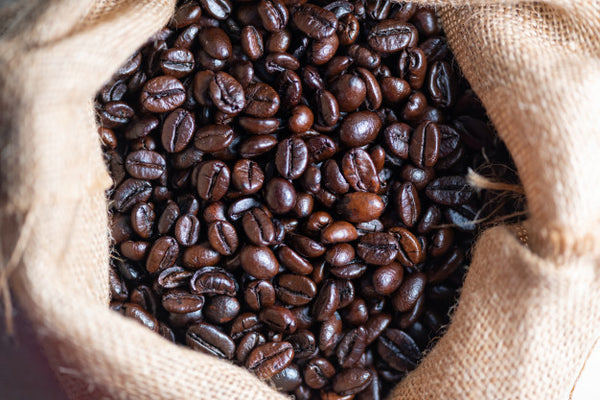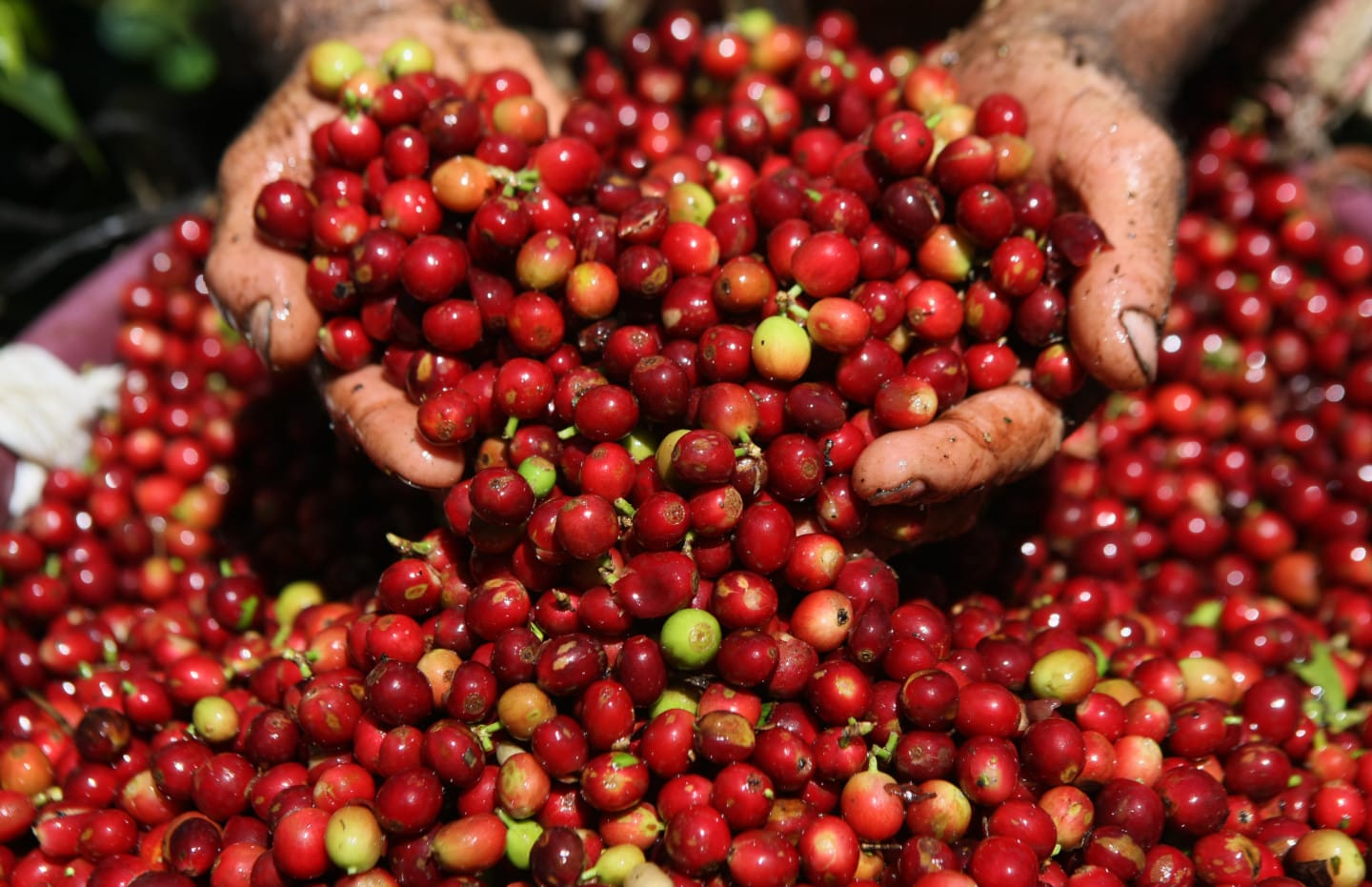Helpful Hints to Get the Best Out of SOE Single Origin Espresso
Helpful Hints to Get the Best Out of SOE Single Origin Espresso
Blog Article
Checking Out the Abundant Flavors of Coffee Beans: a Deep Dive Into Espresso and Blended Coffee Beans
When you check out the abundant tastes of coffee beans, you discover a complex world where each range brings its own personality to your mug. Recognizing the beginnings, refining approaches, and toasting methods can transform your coffee experience. As you navigate through the art of espresso and the imagination behind combined coffees, you'll begin to appreciate the nuances that make each sip unique. What you'll discover next could alter the means you appreciate your early morning mixture.
The Beginnings of Coffee Beans: Discovering Terroir and Taste Profiles
When you take a sip of coffee, you're not just enjoying a beverage; you're experiencing an abundant tapestry of flavors shaped by the beans' beginnings. Each region produces one-of-a-kind taste profiles affected by environment, elevation, and soil. Beans from Ethiopia usually rupture with intense, fruity notes, while those from Colombia have a tendency to offer a balanced, nutty sweetness.As you discover different beginnings, you'll notice exactly how terroir-- the environmental factors impacting a crop-- plays a crucial duty. The exact same coffee variety can taste dramatically various depending on where it's grown.When you think about these variables, you begin to appreciate the intricacy behind your cup. Each sip narrates of the land and the farmers that nurtured the beans. Following time you indulge, assume regarding the trip your coffee took prior to it reached your hands, and enjoy those elaborate flavors that show its origin.
Comprehending Espresso: The Art and Scientific Research Behind the Brew
It's not simply concerning the solid taste; it's additionally concerning the techniques that bring it to life when you think about espresso. Understanding how different preparation methods impact taste can transform your brewing experience. Allow's discover the complexities of espresso preparation and discover the special taste accounts that make each mug unique.
Espresso Preparation Techniques
Espresso prep work is both a scientific research and an art, incorporating precise techniques with a deep understanding of coffee. To begin, you'll wish to select high-grade, fresh baked beans and grind them finely for excellent removal. The work dimension is important; too crude, and your espresso will be weak, also great, and it'll be bitter.Next, tamp the grounds uniformly in the portafilter to ensure consistent removal. When you secure it right into the device, goal for a brewing temperature between 190 ° F and 205 ° F.As you draw the shot, expect the excellent removal time-- around 25-30 seconds. The outcome needs to be an abundant, velvety coffee with a gorgeous layer of crema ahead - SOE. With technique, you'll master these strategies
Taste Profiles Described
The globe of espresso supplies an abundant tapestry of taste accounts that can boost your coffee experience. When you take that first sip, you'll discover a balance of sweet taste, acidity, and anger. Each espresso bean brings distinct notes, from flower and fruity to nutty and chocolaty. Light roasts often showcase brilliant acidity and lively tastes, while dark roasts existing much deeper, bolder tones.Understanding these profiles helps you select the ideal coffee for your taste. Explore different blends can reveal unusual mixes. A well-crafted blend might harmonize the bright notes of an Ethiopian bean with the rich, chocolatey undertones of a Brazilian bean. Accept the journey of discovering espresso's diverse tastes, and you'll change your coffee routine right into an interesting journey.
Handling Techniques: Exactly How They Influence Flavor and Scent
While it might seem that the origin of coffee beans is one of the most substantial factor in establishing their taste and fragrance, the handling techniques utilized post-harvest play an equally necessary function. You'll discover that these techniques can significantly modify the last preference profile of your cup.For instance, the washed process gets rid of the fruit from the beans prior to fermentation, often bring about a cleaner, brighter taste. Meanwhile, the natural process leaves the fruit undamaged throughout drying out, resulting in a sweeter, fruitier profile.Other methods, like honey handling, strike a balance, allowing some fruit mucilage to stay, offering a distinct complexity.Each handling method communicates with the beans' inherent features, improving or silencing particular tastes and fragrances. So, when you sip that coffee or blended coffee, keep in mind that the trip from cherry to cup is influenced not simply by beginning but likewise by just how those beans were refined.

Toasting Techniques: Opening the Complete Prospective of Coffee Beans
Roasting methods are important for disclosing the full possibility of coffee beans, as they transform raw, environment-friendly beans right into the fragrant, delicious coffee you delight in. The selection of roasting approach-- light, medium, or dark-- dramatically affects taste profiles. Light roasts maintain the beans' natural level of acidity and investigate this site fruity notes, while medium roasts equilibrium sweet taste and richness. Dark roasts, on the other hand, stress bold, smoky flavors.You can explore roasting temperatures and times to find your excellent brew. A slower roast at lower temperature levels enables intricate tastes to establish, while a quicker roast can heighten anger. Focus on the fractures throughout toasting; the initial crack indicates a light roast, while the second fracture signals a dark roast - Single Origin Espresso. By understanding these techniques, you'll expose a world of taste, elevating your coffee experience to brand-new elevations. Enjoy every sip, understanding the treatment that went right into your cup!
The Magic of Blended Coffee: Creating Special Taste Experiences
Developing a distinct flavor experience with blended coffee can transform your morning ritual into an expedition of preference. By combining different beans from various areas, you can reveal a harmony of tastes that elevate your cup to new elevations. Each mix deals an unique profile, balancing body, sweetness, and acidity to create something truly special.When you pick a mix, you're not just picking a coffee; you're selecting a trip throughout diverse landscapes and cultures. Explore various combinations allows you to discover your personal favorites, whether you delight in fruity notes or rich, chocolatey undertones.Blended coffee likewise provides you the versatility to change the brew to fit your state of mind. You could hunger for a light-bodied blend one day and a strong, dark roast the following. Accept the magic of blending and let each cup shock your taste, making every sip a fascinating journey.
Tasting Notes: Recognizing the Subtleties in Your Mug
As you sip your coffee, you could discover a spectrum of tastes dancing on your palate, each disclosing the intricacies of the beans. You might taste the brilliant level of acidity similar to citrus or the deep, rich notes comparable to dark chocolate. The sweet taste could evoke honey or sugar, balancing the total profile beautifully.Pay focus to the body of the coffee-- does it feel light and ventilated, or is it complete and creamy? The coating, too, uses clues; a sticking around aftertaste may hint at nuttiness or flower undertones.Don' t fail to remember to explore the special characteristics of various beginnings, as each region passes on distinctive flavors. For instance, Ethiopian coffees often present fruity notes, while Colombian beans could showcase a more spherical sweet taste. By identifying these nuances, you'll strengthen your appreciation for every mug, boosting your coffee experience to new elevations.

Brewing Approaches: Optimizing Flavor Removal for each Bean
When you check out the various brewing techniques, you'll find that each method find out this here can substantially influence the taste account of your coffee. From French press to pour-over, each technique essences different compounds, enhancing or silencing specific notes. For example, making use of a French press permits oils to remain in the brew, creating a richer taste, while pour-over stresses quality and brightness.Temperature and grind size additionally play important functions. A coarser work works best for cool mixtures, while a great work is perfect for espresso. Try Visit This Link out water temperature-- in between 195 ° F and 205 ° F-- can expose hidden tastes, too.Don' t forget steeping time; a fast extraction can bring about sour notes, while over-extraction may produce anger. By adjusting these variables, you can make the most of taste removal and genuinely boost your coffee experience. Appreciate the journey of discovering what technique best fits your taste!
Often Asked Inquiries
What Is the Ideal Water Temperature for Developing Coffee?
The optimal water temperature level for brewing coffee's between 195 ° F and 205 ° F. If you make use of water that's too warm, you'll over-extract flavors; also chilly, and you won't remove enough. Go for that wonderful place for the very best mixture!
How Does Work Size Impact Coffee Flavor?
Grind dimension substantially influences coffee taste. Better grinds extract much more tastes and oils, resulting in a bolder taste, while coarser grinds yield a lighter taste. Adjusting work size assists you accomplish your desired coffee account.
Exist Health And Wellness Perks Linked With Alcohol Consumption Coffee?
Yes, consuming coffee can offer wellness advantages. It may improve cognitive feature, boost metabolic process, and lower the threat of specific diseases. Simply bear in mind to appreciate it in moderation to profit without negative results.

What Is the Difference Between Arabica and Robusta Beans?
Arabica beans are smoother and sweeter, commonly including fruity flavors, while robusta beans are stronger with a bitter taste and greater high levels of caffeine web content. You'll observe these differences in scent and brewing experience.
How Can I Shop Coffee Beans for Quality?
To keep coffee beans for freshness, keep them in an airtight container, far from light, warmth, and dampness. If you only grind what you need right prior to developing, you'll maintain their taste much longer. When you check out the rich tastes of coffee beans, you discover a complicated world where each variety brings its own character to your cup. When you take a sip of coffee, you're not just appreciating a beverage; you're experiencing a rich tapestry of tastes shaped by the beans' beginnings. While it might appear that the beginning of coffee beans is the most considerable factor in identifying their taste and fragrance, the handling techniques used post-harvest play a just as necessary role. Toasting techniques are essential for revealing the full capacity of coffee beans, as they change raw, eco-friendly beans right into the fragrant, savory coffee you take pleasure in. As you sip your coffee, you may see a spectrum of flavors dancing on your taste, each revealing the complexities of the beans.
Report this page